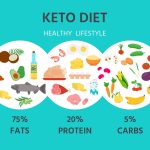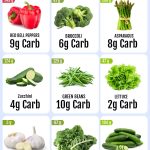Intermittent fasting (IF) has become a popular strategy for weight loss and overall health improvement. Unlike traditional dieting, which focuses on what you eat, intermittent fasting focuses on when you eat. This approach can simplify your eating habits and lead to effective weight management. In this guide, we’ll explore the seven best intermittent fasting methods for weight loss, their benefits, and answer frequently asked questions to help you choose the best approach for your lifestyle.
1. 16/8 Method: The Classic Time-Restricted Eating
Overview:
The 16/8 method, also known as the Leangains protocol, is one of the most popular intermittent fasting methods. It involves fasting for 16 hours and eating during an 8-hour window. For example, if you eat between 12 p.m. and 8 p.m., you fast from 8 p.m. to 12 p.m. the next day.
Benefits:
- Simplicity: This method is straightforward and easy to follow.
- Improved Insulin Sensitivity: It helps regulate blood sugar levels, reducing the risk of type 2 diabetes.
- Effective for Weight Loss: By reducing the eating window, you naturally decrease calorie intake.
Tips for Success:
- Start with a 12-hour fasting period and gradually increase to 16 hours.
- Stay hydrated with water, herbal teas, or black coffee during fasting hours.
2. 5:2 Method: The Two-Day Fast
Overview:
The 5:2 method involves eating normally for five days a week and drastically reducing calorie intake on two non-consecutive days. On fasting days, women typically consume around 500 calories, and men consume about 600 calories.
Benefits:
- Flexibility: Allows you to eat normally most days of the week.
- Reduced Caloric Intake: Effective for weight loss due to calorie reduction on fasting days.
- Potential Longevity Benefits: Studies suggest intermittent fasting can increase lifespan.
Tips for Success:
- Choose non-consecutive fasting days to prevent fatigue.
- Plan low-calorie meals that are filling and nutritious.
3. Eat-Stop-Eat: The 24-Hour Fast
Overview:
Eat-Stop-Eat involves fasting for a full 24 hours once or twice a week. For instance, if you finish dinner at 7 p.m., you would not eat again until 7 p.m. the following day.
Benefits:
- Effective Calorie Reduction: A full day of fasting can significantly reduce calorie intake.
- Enhanced Fat Burning: Longer fasting periods can boost fat metabolism.
Tips for Success:
- Start with shorter fasts and gradually increase to 24 hours.
- Break your fast with a balanced meal to avoid digestive discomfort.
4. Alternate-Day Fasting: The Every-Other-Day Approach
Overview:
Alternate-day fasting involves alternating between days of regular eating and days of fasting or very low-calorie intake. On fasting days, you might consume about 500 calories or less.
Benefits:
- Significant Weight Loss: Frequent fasting days can lead to substantial calorie reduction.
- Improved Metabolic Health: Can help regulate blood sugar and cholesterol levels.
Tips for Success:
- Ensure adequate nutrition on eating days to support overall health.
- Stay hydrated and manage hunger with low-calorie snacks on fasting days.
5. Warrior Diet: The One-Meal-a-Day Approach
Overview:
The Warrior Diet involves fasting for 20 hours and eating one large meal within a 4-hour window. The diet emphasizes consuming small amounts of raw fruits and vegetables during the fasting period and having a substantial dinner.
Benefits:
- Enhanced Fat Loss: The extended fasting period promotes fat burning.
- Improved Digestion: Allows the digestive system to rest during fasting hours.
Tips for Success:
- Focus on nutrient-dense foods during the eating window.
- Gradually adjust to longer fasting periods to avoid discomfort.
6. OMAD (One Meal a Day): The Simplest Approach
Overview:
OMAD involves consuming all your daily calories in a single meal, usually within a 1-hour window. The rest of the day is spent fasting.
Benefits:
- Simplicity: Only one meal to prepare and eat, making it easy to follow.
- Effective for Weight Loss: Promotes calorie restriction and fat burning.
Tips for Success:
- Ensure your single meal is well-balanced and includes a variety of nutrients.
- Stay hydrated throughout the day to prevent dehydration.
7. Time-Restricted Eating: The Flexible Fast
Overview:
Time-restricted eating involves limiting your eating to a specific time window each day, typically ranging from 6 to 12 hours. For example, you might eat only between 10 a.m. and 6 p.m.
Benefits:
- Flexible: Choose a time window that fits your lifestyle and preferences.
- Improved Metabolic Health: Can help regulate circadian rhythms and improve insulin sensitivity.
Tips for Success:
- Experiment with different eating windows to find what works best for you.
- Maintain a balanced diet during your eating window to ensure adequate nutrition.
FAQs About Intermittent Fasting for Weight Loss
1. Is intermittent fasting safe for everyone?
Intermittent fasting is generally safe for most healthy adults. However, it may not be suitable for individuals with certain medical conditions, pregnant or breastfeeding women, or those with a history of eating disorders. Always consult with a healthcare professional before starting any fasting regimen.
2. Can I drink liquids during fasting periods?
Yes, you can drink water, herbal teas, and black coffee during fasting periods. These beverages do not break the fast and can help manage hunger and stay hydrated.
3. Will I lose muscle mass with intermittent fasting?
When done correctly, intermittent fasting should not result in significant muscle loss. Ensure you consume adequate protein and engage in regular strength training to maintain muscle mass.
4. How long does it take to see results with intermittent fasting?
Results can vary based on individual factors such as metabolism, diet, and activity level. Many people start to see noticeable changes within a few weeks of consistent intermittent fasting.
5. Can I exercise while intermittent fasting?
Yes, you can exercise while intermittent fasting. Some people find it beneficial to work out during the fasting period, while others prefer to exercise during their eating window. Listen to your body and choose what works best for you.
6. What should I eat during my eating window?
Focus on a balanced diet that includes lean proteins, whole grains, healthy fats, and plenty of fruits and vegetables. Avoid highly processed foods and sugary snacks to maximize the benefits of intermittent fasting.
7. Can intermittent fasting help with other health issues?
In addition to weight loss, intermittent fasting has been linked to various health benefits, including improved blood sugar control, reduced inflammation, and enhanced brain health. However, individual results may vary, and more research is needed in some areas.
Conclusion
Intermittent fasting offers a variety of methods to suit different lifestyles and preferences. Whether you choose the 16/8 method for its simplicity or the OMAD approach for its minimalism, incorporating intermittent fasting into your routine can support effective weight loss and overall health improvement. Remember to listen to your body, stay hydrated, and maintain a balanced diet to maximize the benefits of your chosen fasting method. If you have any concerns or medical conditions, consult with a healthcare professional before starting an intermittent fasting regimen.











